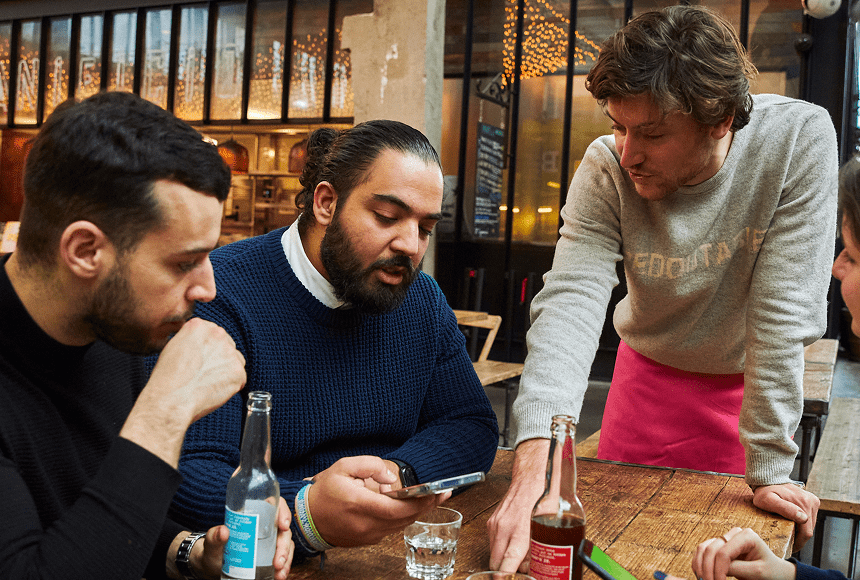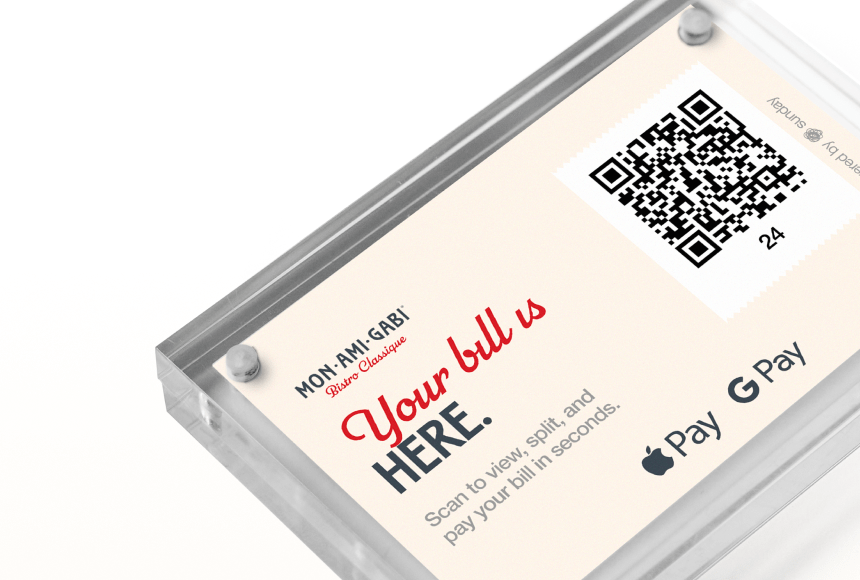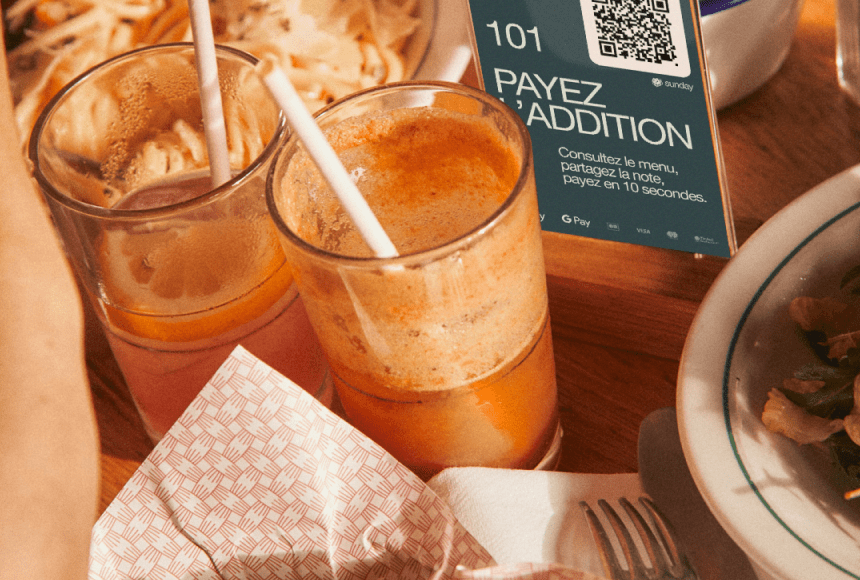
The QR Payment Revolution: How a Simple Code Transforms the Dining Experience
Bringing the Cash Register to the Table—Literally
Close your eyes for a moment and picture your restaurant on a bustling Saturday night. The tables are filled with diners eager to savor your latest culinary creations. Servers crisscross the dining room, juggling trays, drinks, and, every so often, hastily passing off the check. Meanwhile, guests wait patiently for the final act of their dining experience: payment. Yet the final curtain often includes lines at the counter or the clamor of bulky POS terminals moving from table to table.
Now imagine a different scenario: Instead of waiting with credit cards in hand for a server to zip back to the POS terminal, your customers simply pick up their smartphones, scan a small QR code displayed on the final bill, and pay in seconds. No fuss, no crowd, and no signing receipts. This is not a futuristic fantasy. It’s happening today—and it’s changing how restaurants operate.
In this article, we’ll explore the benefits of displaying a QR code on the bill and delve into how this small addition can transform the entire payment experience. Drawing on real-world data, expert insights, and feedback from diners and managers alike, we’ll show you why adopting a QR code payment solution can be the secret sauce to streamlining your restaurant’s operations.
Speed and Convenience: A Win-Win for You and Your Guests
Ask almost any restaurant owner what they’d like to improve in their operation, and efficiency will probably top the list. By placing a QR code directly on the bill, speed becomes the name of the game.
- Shorter Wait Times: According to a 2022 FIS Global Payments Report, nearly half of U.S. consumers dislike waiting for a physical payment terminal. A QR code offers instant access to the payment page, reducing or even eliminating wait times.
- Instant Tips: Prompted tipping screens appear right on guests’ smartphones. Patrons can add a tip in a matter of taps—often increasing average tip amounts simply because it’s so seamless.
- Higher Table Turns: Because payments happen faster, you can serve more diners in the same time frame. For busy establishments, a few extra minutes saved per table can translate into a significant revenue boost.
On top of this, your guests appreciate the simplicity. No more flagging down a server or handing over credit cards. With a camera app, the payment page appears, and diners are in control of the final step in their meal.
Independent Payment: Empower Your Diners
One of the biggest perks of QR code payments is independence. With traditional approaches, even the digital variety, guests typically have to rely on staff to bring a terminal to the table or pick up their credit card and process it at the POS station. QR code payments, in contrast, are about handing control over to your guests—empowering them to settle the tab when they want to.
For diners, this is a dream come true. They can review the bill without feeling rushed, split payments if needed, and pay entirely on their schedule. For you, the restaurant owner, it means happier guests who leave at just the right pace for your next seating. This also frees up your staff to focus on more engaging tasks like talking up your latest menu addition or providing thoughtful wine recommendations, rather than constantly running back and forth to close out checks.
Boosting Guest Engagement—Beyond the Transaction
An often-overlooked advantage of QR code payments is the opportunity to engage with guests even after they’ve settled their bill. By placing a QR code on the final check, you can direct customers to more than just a payment platform:
- Promote Special Events: Direct your diners to upcoming tasting menus, live music days, or themed nights right after they complete their payment.
- Gather Feedback: Encourage them to leave a rating or testimonial on Google Reviews or Yelp, helping your business bolster its online presence through authentic customer sentiment.
- Offer Loyalty Programs: Seamlessly guide them to sign up for a loyalty program or newsletter, or highlight seasonal offers, encouraging repeat visits.
Think of it as turning the last page of the menu into a mini marketing platform. The magic of the QR code is that it can link to anything—so your imagination is the only limit. It’s like tucking a personal invitation into every check.
The Technology Advantage: Why Now?
For a long time, QR codes in the United States were met with a bit of skepticism. Some diners struggled to open them, or certain smartphone cameras didn’t automatically recognize them. Fast-forward to today, and QR codes are practically built-in across devices. Your guests know how to use them; they see them on everything from event tickets to coffee shop promotions. In short, the infrastructure is finally in place.
According to a Statista report on QR codes in the U.S., scans have skyrocketed in the past two years, indicating a growing comfort with and trust in this simple technology. As consumers adapt, it’s logical for restaurants to optimize a pain point that’s historically been slow and manual: payment.
By leveraging a QR code, you also reduce the friction customers might encounter with more traditional processes—like dealing with a physical payment terminal that malfunctions or fails to connect. Once the code is on the receipt, it’s a matter of scanning, which is near-instant for the diner.
Less Hardware Means Lower Costs
Maintaining multiple POS terminals can quickly chip away at your bottom line. Between hardware costs, maintenance fees, and potential repair bills, you might be surprised how quickly the expenses add up. But when you use a QR code-based payment option, great things happen:
- Fewer Terminals: You don’t need as many credit card terminals because smartphone scans replace bulky devices at the tables.
- Lower Maintenance: With fewer gadgets in circulation, you can cut down on repair fees and external service calls.
- Streamlined Cash Flow: Digital payments can often be processed more quickly, putting funds in your account sooner and simplifying your bookkeeping.
These savings allow you to allocate resources to other parts of your business—like upgrading kitchen equipment or investing in improved guest experiences.
Making It Personal: A Case Study
Imagine you run a cozy bistro called “The Olive Branch.” You’re known for your house-made pasta and family-like atmosphere. The Olive Branch is typically a hive of activity around dinner service, and you want to keep it that way. Here’s how adding a QR code to the bill made a difference:
- Implementation: You place a discreet QR code on the guest check folder. When guests receive the bill, they can scan with their phones.
- Speed of Service: Payment times drop by about 40% because most guests already have their phones close at hand.
- Enhanced Staff Interactions: Freed from running a card machine back and forth, your servers spend more time engaging with customers—recommending dessert wines, talking about seasonal dishes, or simply creating rapport.
- Increased Tips: Convenient tip prompts result in a measurable uptick in gratuities. Servers notice the difference, and morale improves across the team.
- Customer Feedback: A quick link after payment leads diners to a Google Review prompt. Within a month, The Olive Branch sees a 15% increase in positive online feedback. This not only boosts local search rankings but also attracts new guests.
- Positive Buzz: Word spreads among local foodies that The Olive Branch has high-tech payments—even though it’s just a simple QR code. Ironically, that small digital convenience feels cutting-edge and sets you apart from neighboring eateries.
This scenario highlights how a modest tweak like adding a QR code can elevate both front-of-house efficiency and your restaurant’s reputation.
Overcoming Common Objections
Change in the restaurant industry often sparks concerns. Will QR code payment alienate older customers? Will people trust the technology? Let’s address some of the typical reservations:
- Customer Age Doesn’t Matter as Much as You Think: Many older guests are surprisingly tech-savvy if the process is intuitive. The key is to keep instructions simple.
- Data Security: Online payment solutions typically utilize encryption and secure tokens. This approach can be safer than a physical card exchange.
- Lost Personal Touch: Some worry a digital payment method feels impersonal. But because guests still interact with staff during the meal, it’s unlikely the overall experience will be diminished—especially if you train your team to explain and encourage the new method in a friendly way.
Shifting from a traditional payment approach to a QR code system does require some staff training and coping with an initial learning curve. However, once your team and patrons become familiar with the new workflow, you’ll see improved speed, satisfaction, and whole-hearted adoption.
What It Means for Staff and Operations
When you implement QR code payments, you’re not just changing how customers pay—you’re reshaping your team’s workflow. The biggest benefit is efficiency. Your servers no longer need to drop off the bill and circle back with a payment terminal, possibly multiple times for larger groups.
Instead, staff can gently remind customers that they can pay anytime by scanning the code. This shift allows servers to focus on “experience” tasks:
- Greeting new arrivals promptly.
- Ensuring drinks are refilled on time.
- Providing deeper insights into the menu or wine list.
- Watching for cues that guests need help or have questions.
A small change can lead to a big impact in staff productivity, morale, and even job satisfaction. When servers feel efficient and valued, it reflects in the service quality—and that’s exactly what keeps guests coming back.
sunday’s Innovative QR Payment Approach
If your ears perked up at the idea of faster check settlements and immediate feedback, you’re not alone. Cutting-edge QR solutions like sunday streamline the payment process so that restaurants can focus on what really matters: creating memorable dining moments.
With sunday’s solution, a scannable QR code on the bill leads guests to a user-friendly interface where they can pay, tip, and even leave a Google review—all from their own phones. This approach not only eliminates lengthy waits for a POS terminal but also provides an ideal opportunity to gather direct customer feedback in real time.
What sets sunday apart is how quickly restaurants can integrate it into existing operations. It doesn’t require additional hardware or constant software updates. The minimal disruption to staff routines, combined with the enhanced guest experience, makes it an attractive choice for restaurants seeking an immediate upgrade with minimal fuss.
Tips for a Seamless Transition to QR Code Payment
Ready to bring QR payments to your tables? Here are practical pointers for rolling it out:
- Inform Your Staff: Train servers and hosts so they can confidently explain the new process. Let them show guests how to scan the code if needed.
- Visibility Matters: Make your code easy to spot on the bill. Consider adding a brief line on the check (“Scan Here to Pay”) to guide guests.
- Test It Yourself: Always run through the user experience. Make test payments to ensure everything is working smoothly before releasing it to the dining room.
- Monitor Feedback: Ask customers what they think. Are they finding it easy? Any hiccups? Then adjust accordingly.
You want your introduction of QR code payments to feel like a natural extension of your overall customer service, not a surprise twist at the end of the meal. Good communication and visible signage are crucial to making it work.
A Final Serving of Advice
Much like perfecting a signature dish, adopting QR code payments requires the right ingredients—technology, training, and a focus on user experience. As diners continue to embrace digital methods, including contactless and mobile payments, now is the perfect time to innovate. When the payment process is as enjoyable as the meal itself, customers leave happy, staff remain energized, and your restaurant benefits from the streamlined flow.
Whether you’re running a high-volume establishment craving faster table turns or a neighborhood bistro that prides itself on personal connection, QR code payments meet both needs by merging convenience with human warmth. Menus, ambiance, and staff all create the story of your restaurant—so why not ensure the finale is just as memorable and efficient?
By displaying the QR code directly on the bill, you’re asserting that your restaurant is forward-thinking, customer-centric, and ready to adapt to modern dining expectations. In short, it’s a strategic move that promises happier diners, empowered staff, and more frequent returns. And that, in the hospitality world, is a recipe for lasting success.
Find out more today
Drop us your details below and we’ll reach out within the next 24h
“Check please” is a thing of the past.
With our integrated QR codes your customers pay in seconds, straight from their table.




